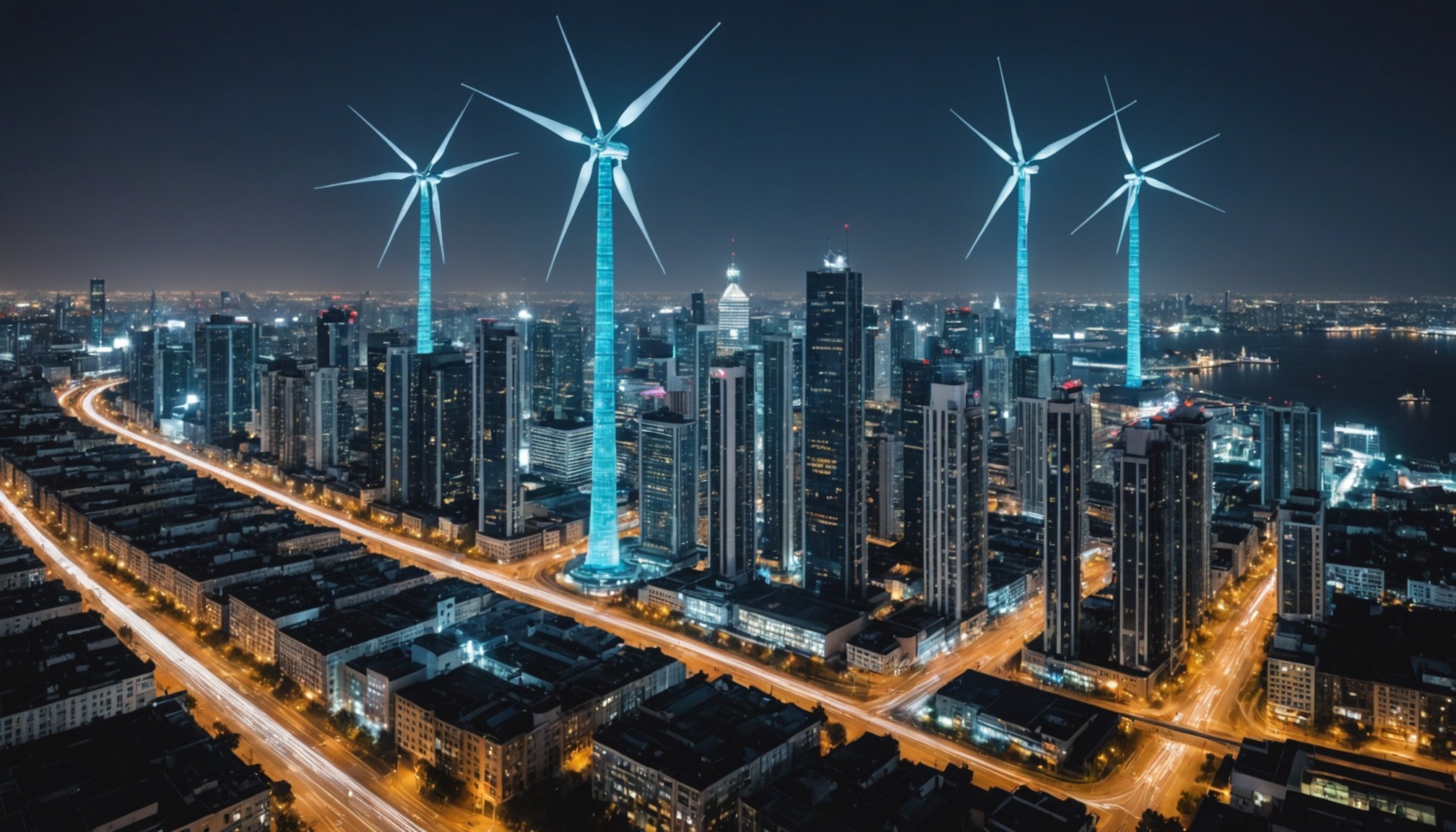Understanding AI in Energy Distribution
The implementation of AI in energy distribution is revolutionising how smart cities manage their resources. By employing advanced technologies like data analytics and machine learning, cities can greatly improve the efficiency of their energy distribution systems.
AI Technologies and Their Roles
AI technologies, such as predictive analytics, enable real-time monitoring and predictive maintenance, minimizing energy waste and reducing costs. Machine learning algorithms analyze vast amounts of data from smart grids to forecast energy demand patterns accurately. This capability allows for more responsive and efficient allocation of resources, tailored to both daily and seasonal fluctuations in energy use.
Have you seen this : Transforming digital identity verification: how blockchain technology enhances efficiency and security
Efficiency in Smart City Infrastructure
Smart cities rely heavily on efficient energy distribution to ensure sustainability and manage resources effectively. An AI-powered infrastructure can rapidly adapt to changes in energy demand while maintaining stability in the power grid. Enhanced efficiency not only ensures better service quality but also reduces the environmental footprint, supporting cities in their goal to become more sustainable.
Data Analytics in Optimisation
Data analytics is crucial for optimizing energy usage and distribution. By harnessing AI, cities can identify and rectify inefficiencies within the energy network, thereby improving overall performance. AI-driven insights enable proactive adjustments, ensuring that energy is utilised optimally, saving both costs and resources for urban environments.
In parallel : Harnessing ai power: innovative approaches to optimize model training with limited hardware resources
Case Studies of Smart Cities Implementing AI Solutions
The integration of AI in smart cities is revolutionising energy management. Let’s dive into some smart city case studies that have successfully harnessed AI for improved energy efficiency.
Barcelona is a leading example of AI implementation, focusing on enhancing energy distribution. By implementing AI-driven data analytics, the city has optimised energy use in public buildings, resulting in substantial savings and reduced carbon footprint. Smart sensors monitor real-time energy consumption, allowing for accurate forecasting and demand-response actions.
In Singapore, the use of AI in smart grids has elevated energy efficiency to new heights. They employ advanced AI algorithms to predict demand and adjust supply dynamically. This minimises energy waste and ensures more sustainable energy distribution, particularly during peak hours. The lessons learned highlight the importance of data accuracy and the scalability of AI solutions.
Meanwhile, Amsterdam has implemented AI in its municipal waste-to-energy plant. By utilising AI for predictive maintenance and efficient energy conversion, the city has maximised energy extraction from waste. This not only achieves cost savings but also boosts Venice’s environmental sustainability.
These AI implementations underscore a common theme: the need for robust data infrastructure and the potential for substantial energy and cost benefits.
Benefits of Leveraging AI for Energy Efficiency
AI technologies are pivotal in enhancing energy efficiency by significantly reducing energy wastage. Advanced algorithms analyze consumption patterns in real-time, enabling proactive measures to conserve energy. This optimization leads to substantial cost savings, as facilities can minimize unnecessary energy use.
Through AI-driven energy management systems, businesses and households can achieve considerable financial savings. AI’s ability to forecast energy demands and automate responses ensures that energy is only used when necessary. By adapting to real-time conditions, these systems prevent overuse and lower overall consumption costs.
AI also enhances decision-making processes related to energy management. With data-driven insights, organizations can make informed decisions about energy use. AI can identify inefficiencies and suggest improvements, allowing swift action to maximize efficiency and reduce costs. Cutting-edge AI solutions can predict maintenance needs, preventing costly system downtimes.
In leveraging AI for energy efficiency, organizations not only benefit from immediate savings but also contribute to sustainability goals. By intelligently managing energy resources, AI supports efforts to lower environmental impact while maximizing economic advantages. The integration of AI into energy management heralds a new era of efficiency and financial prudence.
Challenges of Integrating AI in Energy Systems
Integrating AI in energy systems faces substantial challenges that can impede progress. One major difficulty is overcoming technology barriers. Existing energy frameworks often lack compatibility with AI technologies, requiring significant modifications to accommodate new systems. This can involve updating infrastructure and retraining staff, which entails both time and financial resources.
Furthermore, regulatory and data privacy issues present considerable hurdles. As AI systems often rely on vast amounts of data to optimize energy management, safeguarding that data is critical. Regulations governing data privacy can be strict, and non-compliance may result in hefty fines, making it essential for organizations to navigate this landscape carefully.
Organizational resistance also plays a crucial role in hindering AI integration. Resistance can stem from a lack of understanding or fear of the unknown, leading to reluctance among stakeholders to embrace AI technologies. To address this, organizations must foster an environment that encourages stakeholder buy-in and emphasizes the benefits of AI integration. Educating team members and demonstrating successful use cases can help alleviate concerns and promote collaboration.
Successfully integrating AI in energy systems requires overcoming these significant AI integration challenges, including technology adaptation, regulatory compliance, and securing organizational support.
Future Trends in AI and Energy Distribution
The future of AI in energy is poised to redefine how we generate, distribute, and consume electricity. With the rapid advancement of technology, AI is becoming integral in creating efficient smart city energy solutions. Imagine neighborhoods where solar energy is optimally shared and stored, reducing waste and lowering costs. This is not just a vision but an emerging reality.
Predictions suggest that AI technologies will evolve to provide real-time energy management, significantly cutting down operational costs and minimizing environmental impact. These advancements are likely to include innovative energy distribution systems, such as decentralized networks, where local, sustainable sources work in harmony with central grids.
The role of collaboration is crucial. Cities, technology companies, and regulators must work synergistically to embrace these technologies. This collaboration will ensure that future energy solutions are both practical and widely beneficial. By sharing data and expertise, these stakeholders can implement new strategies more effectively, paving the way for sustainable urban development.
Looking ahead, the integration of AI with energy systems represents not only a technical challenge but also an opportunity for transformative change, providing smarter, cleaner, and more reliable energy solutions for growing urban populations.






